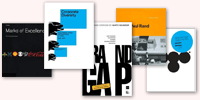
A B-Side BY Armin
League of American Bicyclists
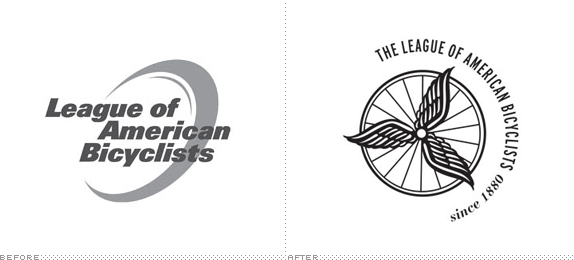
About: (Est. 1880) “The League of American Bicyclists promotes bicycling for fun, fitness and transportation, and works through advocacy and education for a bicycle-friendly America. The League represents the interests of America’s 57 million bicyclists, including its 300,000 members and affiliates.”
Design by: Language Dept.
Ed.’s Notes: Some additional uses of the logo below (or after the jump) and some application images at the case study link.
Relevant links: Language Dept case study. League press release.
Select quote: “Our new look may seem a bit familiar: It draws on our unique history and depth of knowledge, using elements of the original winged wheel logo of the League of American Wheelmen. But, with a modern edge and forward motion, it also showcases our commitment to propel the new, diverse and growing ranks of bicyclists in the United States, recognizing and representing the current and future face of the cycling movement.”
Continue reading this entry

DATE: May.07.2013 POSTED BY: Armin
POSTED BY: Armin CATEGORY: The B-Side Non-Profit
CATEGORY: The B-Side Non-Profit  COMMENTS:
COMMENTS:


Opinion BY Armin
Acumen’s Manifesto as Logo
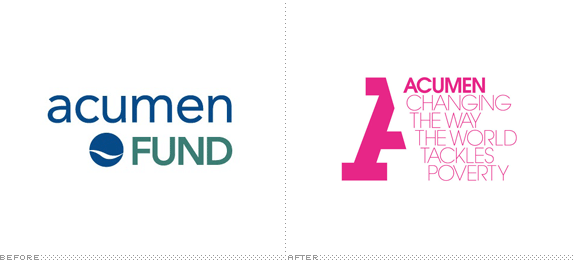
Established in 2001, Acumen (previously Acumen Fund) is a non-profit organization that “raises charitable donations to invest in companies, leaders, and ideas that are changing the way the world tackles poverty.” Acumen invests in companies with a focus on operations in East Africa, West Africa, India, Pakistan or Latin America in the sectors of agriculture, energy, education, health, housing, or water and, most importantly, that they make a product or deliver a service that addresses a critical need for the poor. Over the weekend, Acumen shortened its name, introduced a new identity designed by London-based johnson banks, and launched a new website by briteweb.
Continue reading this entry

DATE: Apr.23.2013 POSTED BY: Armin
POSTED BY: Armin CATEGORY: Non-Profit
CATEGORY: Non-Profit  COMMENTS:
COMMENTS:

TAGS: avant garde, colorful, flexible identity, johnson banks, slab serif,

A B-Side BY Armin
Lord Mayor’s Charitable Foundation
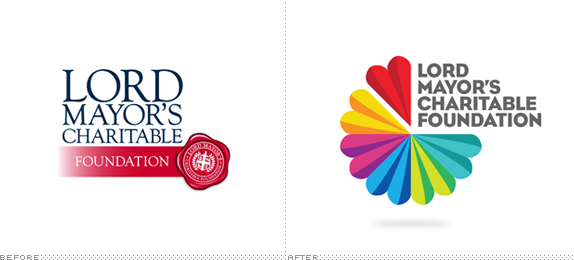
About: (Est. 1923) “The Lord Mayor’s Charitable Foundation is a leading philanthropic organisation and Australia’s largest community foundation. The Foundation applies a combination of grants, research, community education and partnerships with donors and other funders to increase life opportunities and promote social inclusion. In 2012 it provided grants to more than 450 charitable agencies supporting people who are socially and economically disadvantaged. The Foundation has a keen interest in Homelessness, Ageing and Youth, and also funds eligible projects in Health, Arts and Heritage and the Environment.”
Design by: Designworks
Ed.’s Notes: Pretty! Bigger view of the logo and some applications below (or after the jump).
Relevant links: Designworks case study. LMCF press release.
Select quote: “Through the use of colour, the vibrant new logo captures the Foundation’s range of programs from philanthropic services to research and grantmaking. Each colour featured in the logo represents an aspect of the Foundation’s business, and at the centre of the logo is the Foundation’s name in a simple, strong grey type face, bordered by a red heart.”
Continue reading this entry

DATE: Apr.15.2013 POSTED BY: Armin
POSTED BY: Armin CATEGORY: Non-Profit The B-Side
CATEGORY: Non-Profit The B-Side  COMMENTS:
COMMENTS:

TAGS: australia, colorful, heart, Sans Serif,

Opinion BY Armin
Cystic Fibrosis Looking Good
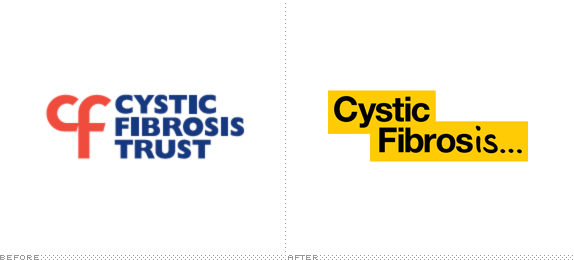
Established in 1964, the Cystic Fibrosis Trust supports “excellence in research and clinical care, as well as providing practical support and advice to people with Cystic Fibrosis and their families,” and is the only UK-wide charity focusing solely on cystic fibrosis (CF). The organization funds research, sets standards of CF care, and provides information and advice to people with CF and their families. But the main challenge with CF remains: explaining what it is and raising awareness. “Cystic fibrosis,” explains the Trust “is chronically misunderstood, kills thousands worldwide and is carried unknowingly in the genes of millions. It’s often invisible to the naked eye yet destroys lives, stopping them short, inflicting hardship and distress on patients, their families and carers. Cystic fibrosis directly affects around 10,000 people in the UK.” Today, the Cystic Fibrosis Trust has launched a new identity-slash-campaign designed by London-based johnson banks.
Continue reading this entry

DATE: Mar.26.2013 POSTED BY: Armin
POSTED BY: Armin CATEGORY: Non-Profit
CATEGORY: Non-Profit  COMMENTS:
COMMENTS:

TAGS: black, hand-drawn, johnson banks, uk, yellow,

Opinion BY Armin
Home is where the Pattern is

Led by the National NeighborWorks Association — an organization that “unites housing and community development practitioners to advocate for affordable housing and economic opportunities” — and supported by over 190 housing and community development organizations at the national and local level, Home Matters is a new national initiative launched yesterday on Capitol Hill that “aims to unite America around the essential role that Home plays as the bedrock for thriving lives, families, and a stronger nation.” Its goal is to raise awareness of the importance of “Home” by educating, bringing disparate organizations and industries together, rallying local leaders and mobilizing the public, encouraging policymakers to protect and support Home and related initiatives, raising funds and increasing investments to sustain the work that makes Home a reality for more Americans, and promoting and honoring the extraordinary impact of Home. All in all, a good thing, considering how screwed up some homes — of all economic and social classes — can be. The initiative’s identity has been designed by Brooklyn, NY-based OrangeYouGlad working under the direction and coordination of New York-based Ideon who set the branding strategy and story.
Continue reading this entry

DATE: Mar.14.2013 POSTED BY: Armin
POSTED BY: Armin CATEGORY: Non-Profit
CATEGORY: Non-Profit  COMMENTS:
COMMENTS:

TAGS: hand-drawn, orange, pattern,

A B-Side BY Armin
LIVESTRONG Foundation
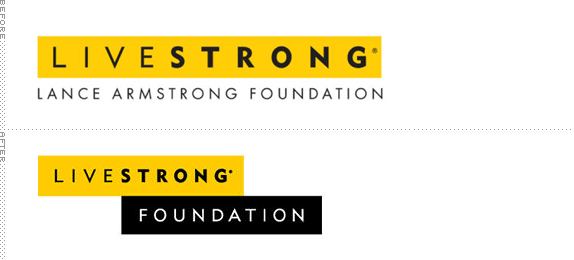
About: (Est. 1997) “The LIVESTRONG Foundation provides free cancer support services to help people cope with the financial, emotional and practical challenges that accompany the disease. Created in 1997 by cancer survivor and philanthropist Lance Armstrong, the Foundation is known for its powerful brand — LIVESTRONG — and for its advocacy on behalf of survivors and their families. With its iconic yellow LIVESTRONG wristband, the Foundation has become a symbol of hope and inspiration around the world. Since its inception, the Foundation has served 2.5 million people affected by the disease and raised more than $500 million to support cancer survivors. One of America’s top cancer non-profit organizations, the Foundation enjoys a four-star rating from Charity Navigator and has been recognized by the National Health Council and the Better Business Bureau for its excellent governance, high standards and transparency.”
Design by: Rigsby Hull.
Ed.’s Notes: To add insult to injury, Lance Armstrong has not only been stripped off his Tour de France wins, his name has been scraped off the logo of his foundation. Take that. A few more images below (or after the jump) and more work and relevant story links at Rigsby Hull’s case study.
Relevant links: Rigsby Hull case study. LIVESTRONG press release.
Select quote: “The LIVESTRONG Foundation also unveiled its new logo at the Assembly, a visual change designed to underscore that the LIVESTRONG ethos — the belief in fighting for people affected by cancer today — is not abstract and, in fact, drives all of the Foundation’s work. The new logo is a natural next step in the Foundation’s evolution and is intended to provide the Foundation’s corporate and marketing partners — and the public — with an unmistakable way of communicating that buying LIVESTRONG-branded gear or supporting the Foundation equates to helping those affected by cancer right now.”
Continue reading this entry

DATE: Mar.13.2013 POSTED BY: Armin
POSTED BY: Armin CATEGORY: Non-Profit The B-Side
CATEGORY: Non-Profit The B-Side  COMMENTS:
COMMENTS:

TAGS: black, Sans Serif, yellow,

A B-Side BY Armin
Ms. Foundation for Women
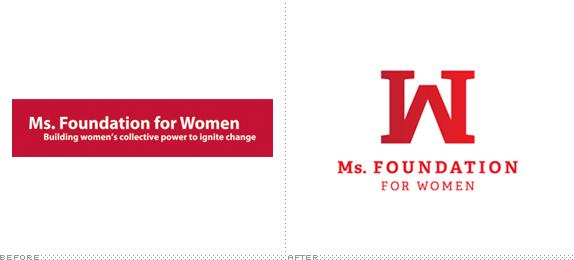
About: (Est. 1973) “The Ms. Foundation for Women fights to eliminate barriers for every woman in the U.S. For 40 years, we have worked tirelessly to secure women’s rights and freedoms with a special commitment to building the power of low-income, immigrant and women of color. At our core, we are advocates giving a voice to women to elevate their most pressing issues. We’re continually investing funds, time, expertise and training in more than 100 trailblazing organizations nationwide to secure a better future for ourselves, our families and our communities.”
Design by: Sullivan.
Ed.’s Notes: Nice double use of the “M” as “W”. Bigger view of the logo and sample applications below (or after the jump).
Relevant links: N/A.
Continue reading this entry

DATE: Feb.28.2013 POSTED BY: Armin
POSTED BY: Armin CATEGORY: Non-Profit The B-Side
CATEGORY: Non-Profit The B-Side  COMMENTS:
COMMENTS:


Opinion BY Armin
Credit Dos and Don’ts
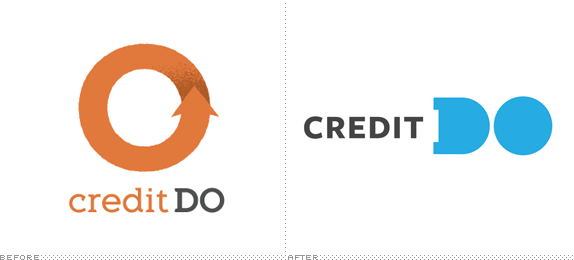
Launched in 2010, Credit Do is a non-profit organization that aims to give youngsters a good grasp of what it takes to be financially responsible and independent while at the same time doing social good. Participants enroll in a project like, say, a food drive and they earn credit towards purchasing food, clothes, supplies, etc. from the local supermarket involved and then for every credit they earn ($10 an hour) another company will match that amount and place it in the participant’s saving account. A cycle of goodwill and small amounts of money earned! All the while, Credit Do provides simple lessons on finances. This month, they launched their first comprehensive website and new identity by New York, NY-based Mucca.
Continue reading this entry

DATE: Feb.21.2013 POSTED BY: Armin
POSTED BY: Armin CATEGORY: Non-Profit
CATEGORY: Non-Profit  COMMENTS:
COMMENTS:

TAGS: colorful, mucca, slab serif,

A B-Side BY Armin
American Society of Furniture Designers

About: (Est. 1981) The American Society of Furniture Designers (ASFD) is “the only international non-profit professional organization dedicated to advancing, improving and supporting the profession of furniture design and its positive impact in the marketplace. Professional Members specialize in the design of both residential and contract furnishings and accessories. Membership includes both American and International professional designers, industry affiliates and associates, design schoolteachers and students. Corporate Members include suppliers of products and services to the industry and furniture manufacturing companies who wish to support the goals and objectives of the Society.”
Design by: The Daly Group.
Ed.’s Notes: Oh, dear god, why?
Relevant links: Furniture Today article.
Select quote: “We are very excited about the image the Daly Group has created with this new logo,” said John Conrad, ASFD president-elect. “The new positioning statement - touching lives by design - is perfectly in sync with our profession. The ASFD board believes that the young designers coming into our industry will easily relate and embrace the renewed ASFD.”
Thanks to Moises Kirsch for the tip.

DATE: Feb.19.2013 POSTED BY: Armin
POSTED BY: Armin CATEGORY: Non-Profit The B-Side
CATEGORY: Non-Profit The B-Side  COMMENTS:
COMMENTS:

TAGS: abstract,

Opinion BY Armin
OzHarvest Gets a New Set of Wheels
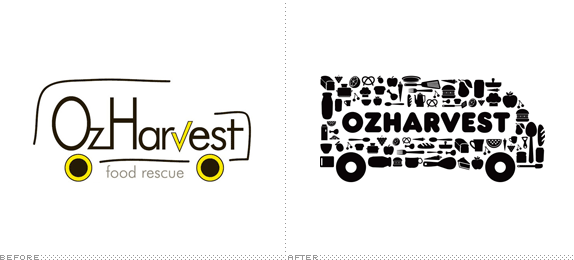
Established in 2004, OzHarvest is an Australian nonprofit organization that rescues food mainly from restaurants, food wholesalers, and retailers to distribute to charities supporting the vulnerable in Sydney, Newcastle, Adelaide, and Brisbane delivering 441,500 meals per month across the country with a fleet of 15 vans. In December OzHarvest introduced a new identity created in a pro-bono collaboration between Frost* and Droga5.
Continue reading this entry

DATE: Jan.09.2013 POSTED BY: Armin
POSTED BY: Armin CATEGORY: Non-Profit
CATEGORY: Non-Profit  COMMENTS:
COMMENTS:





























